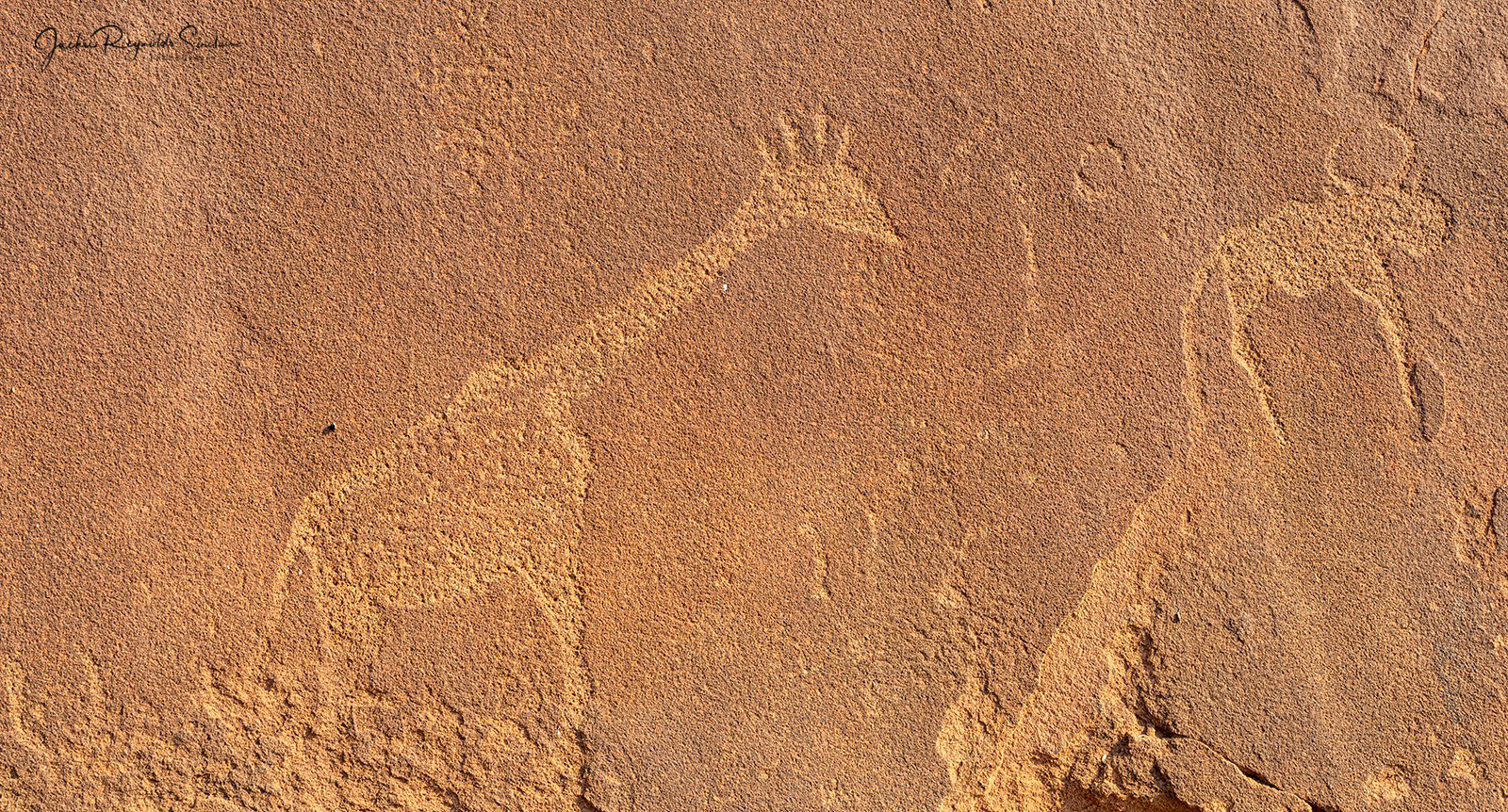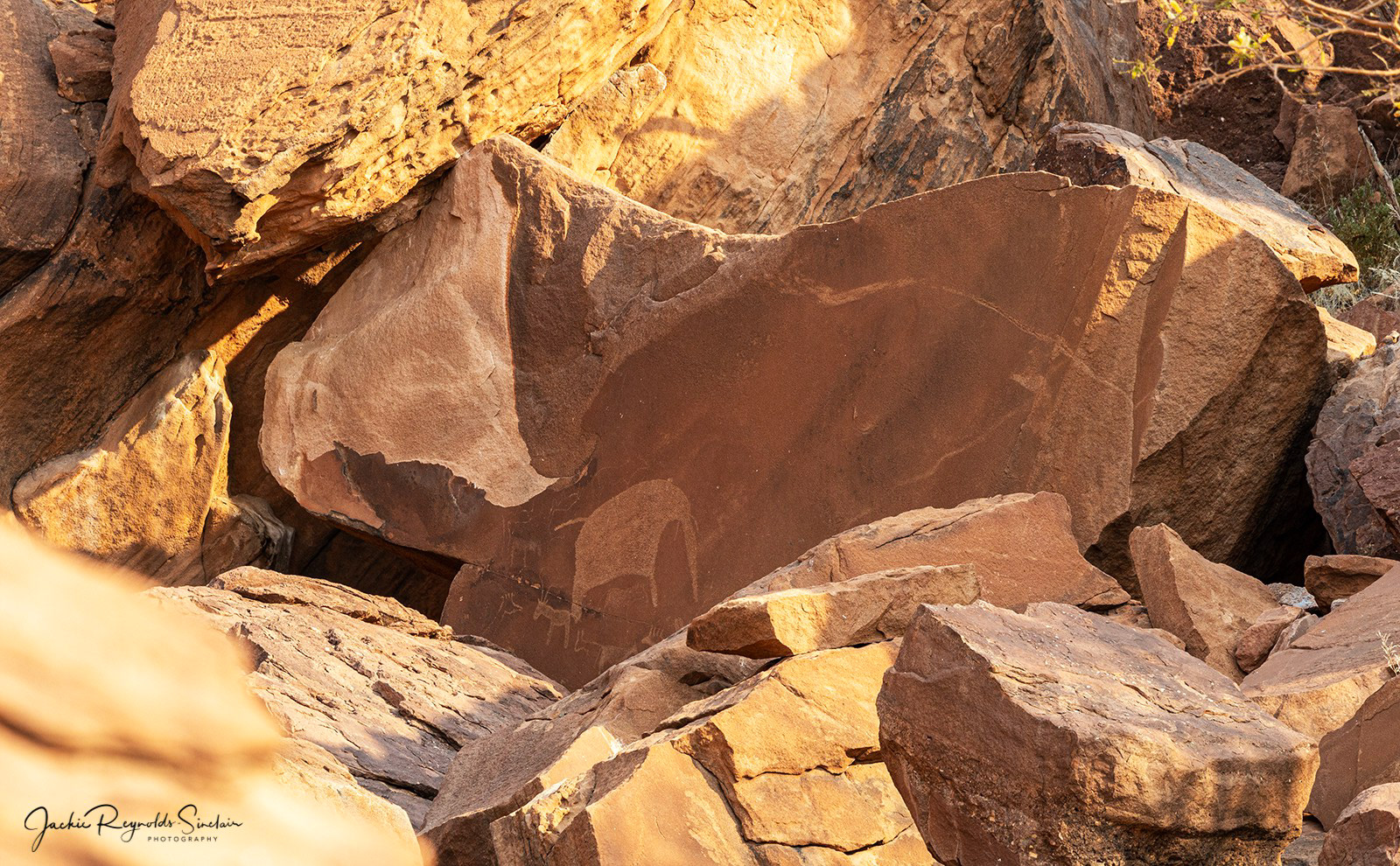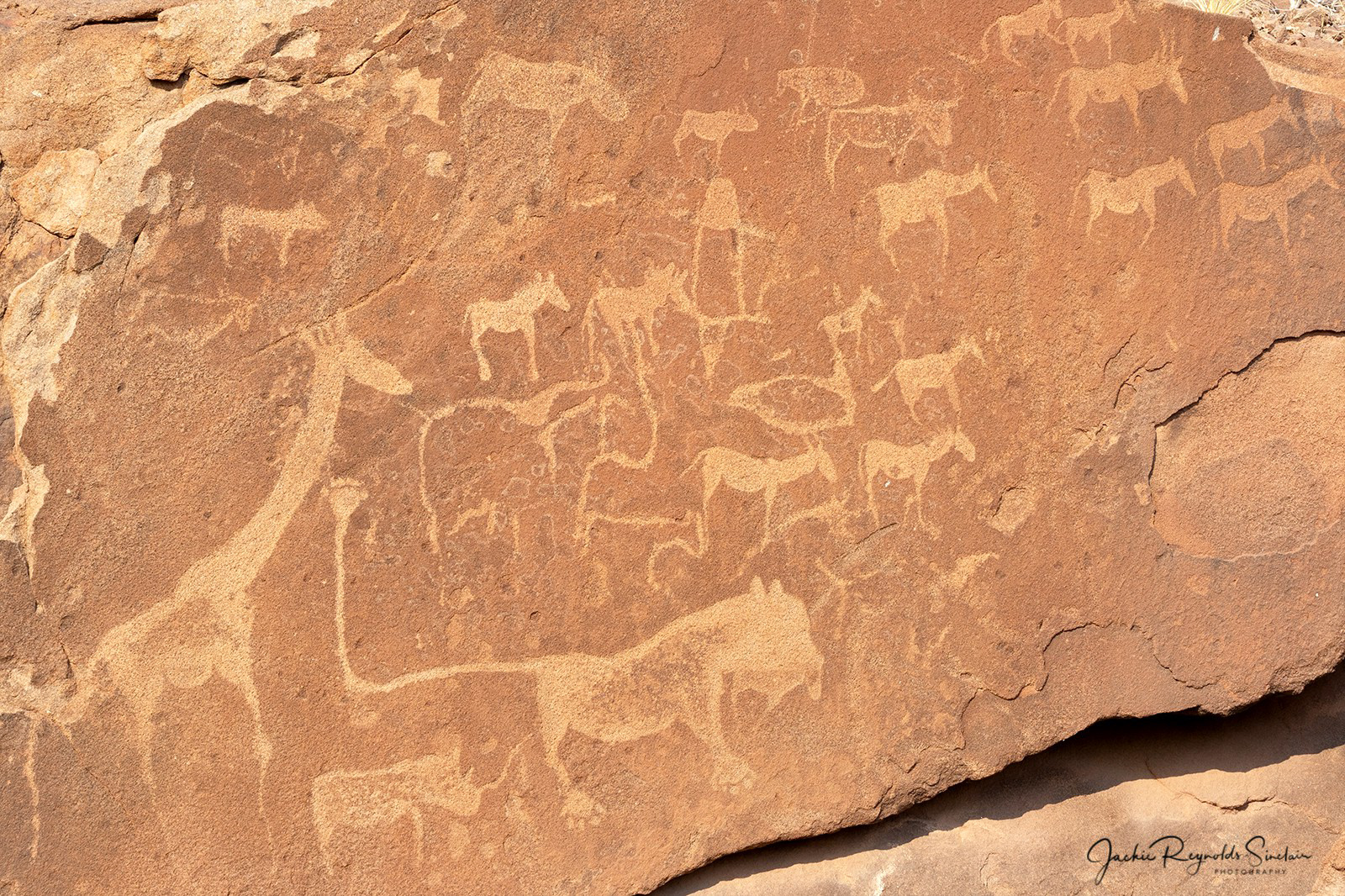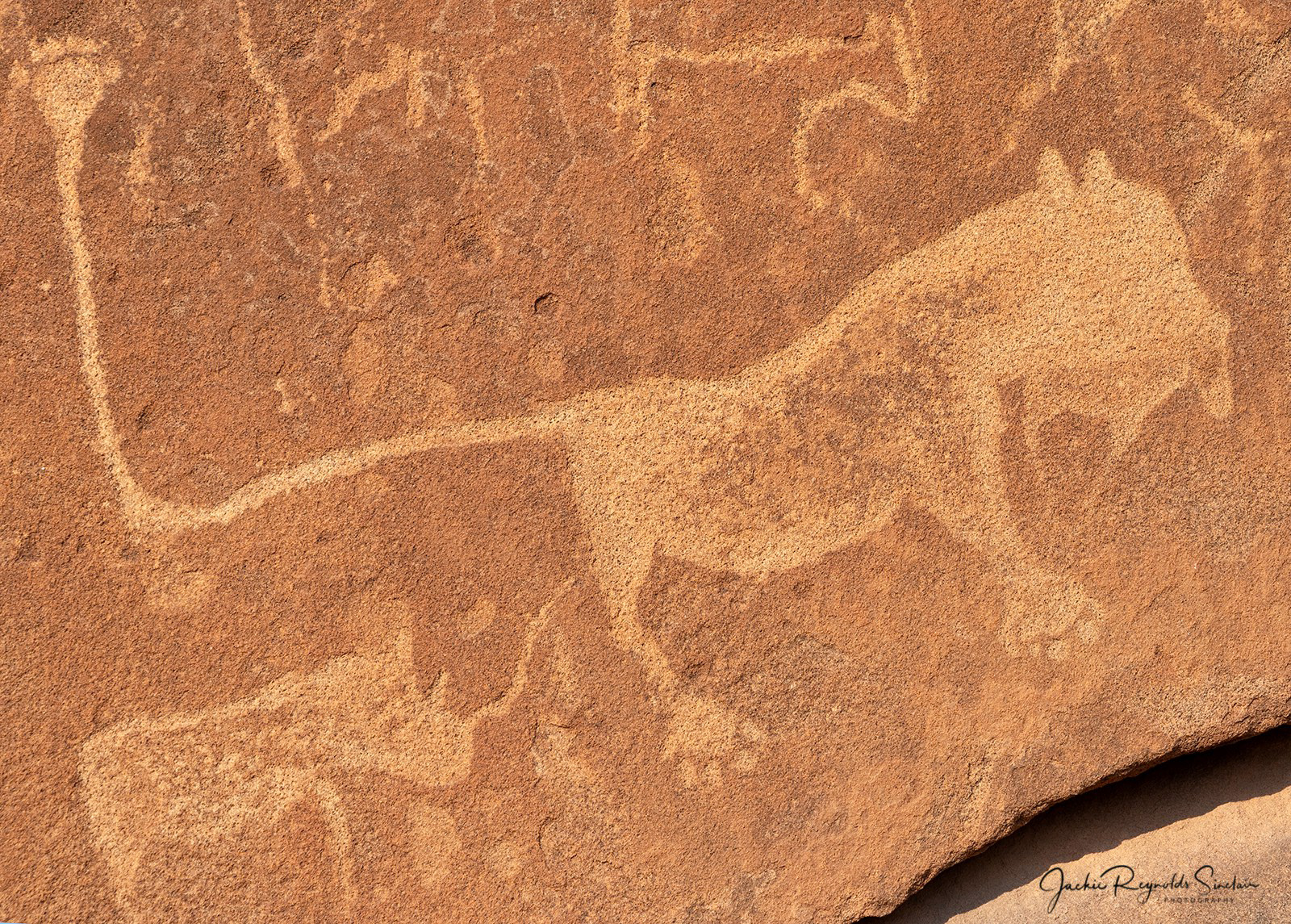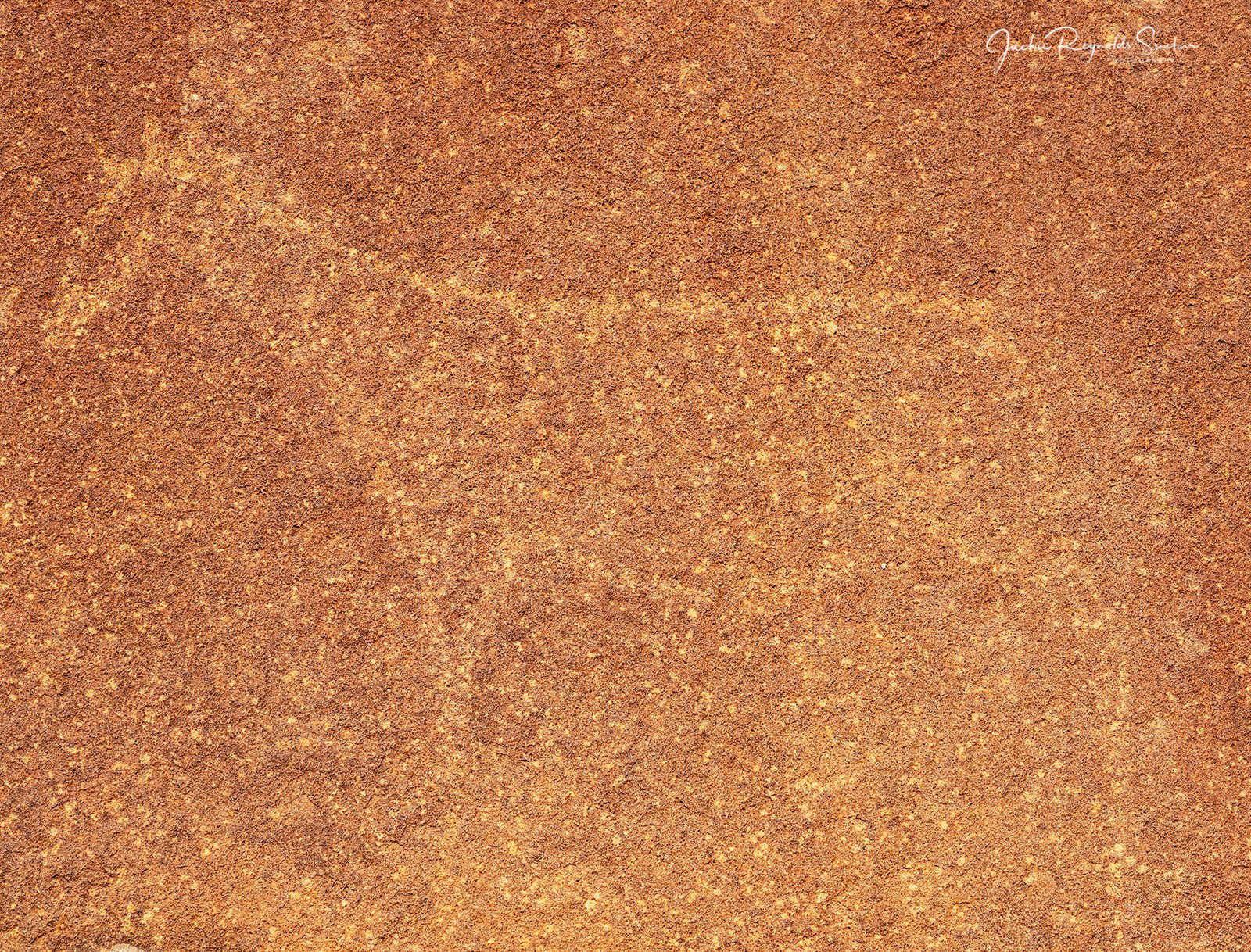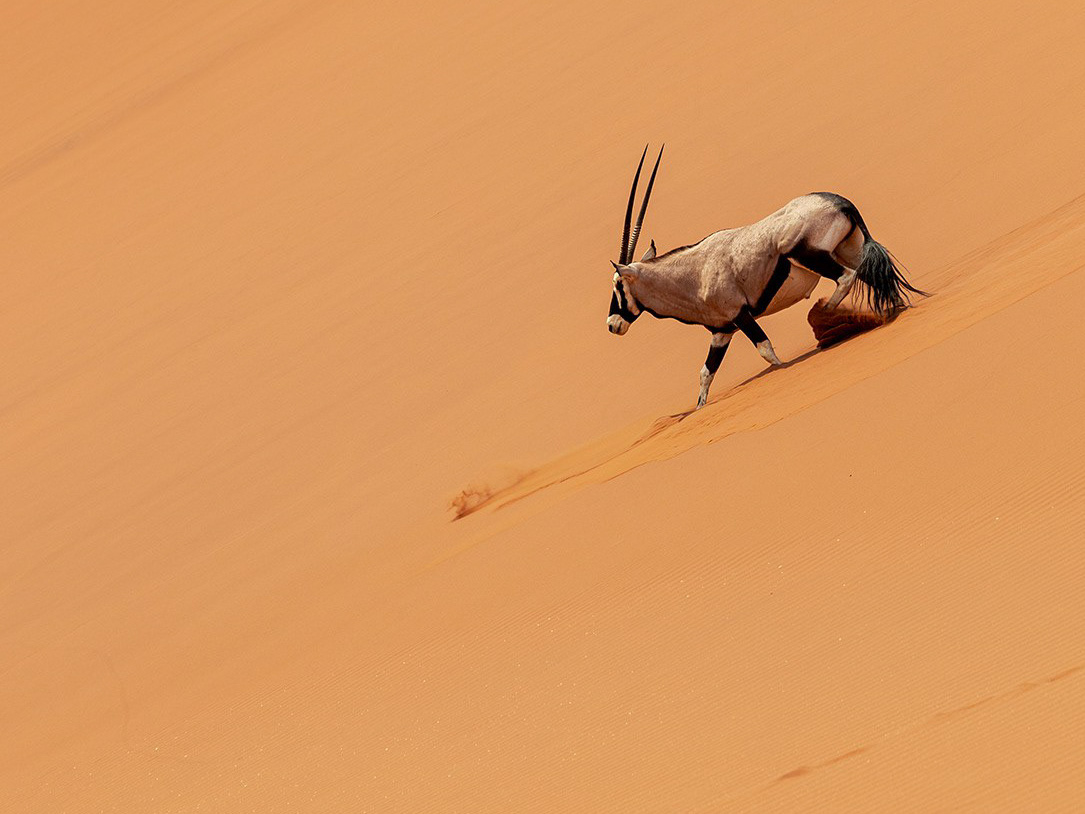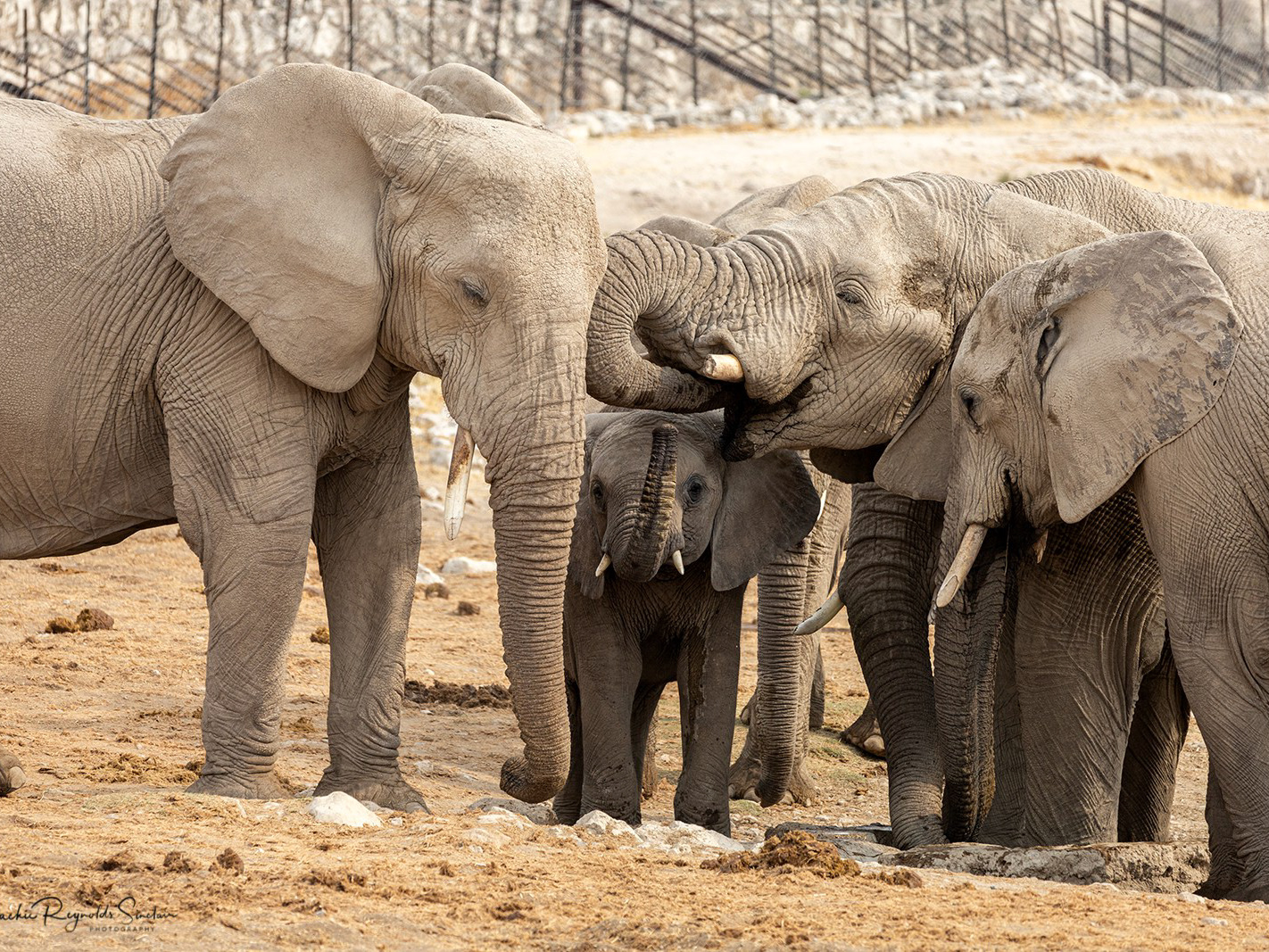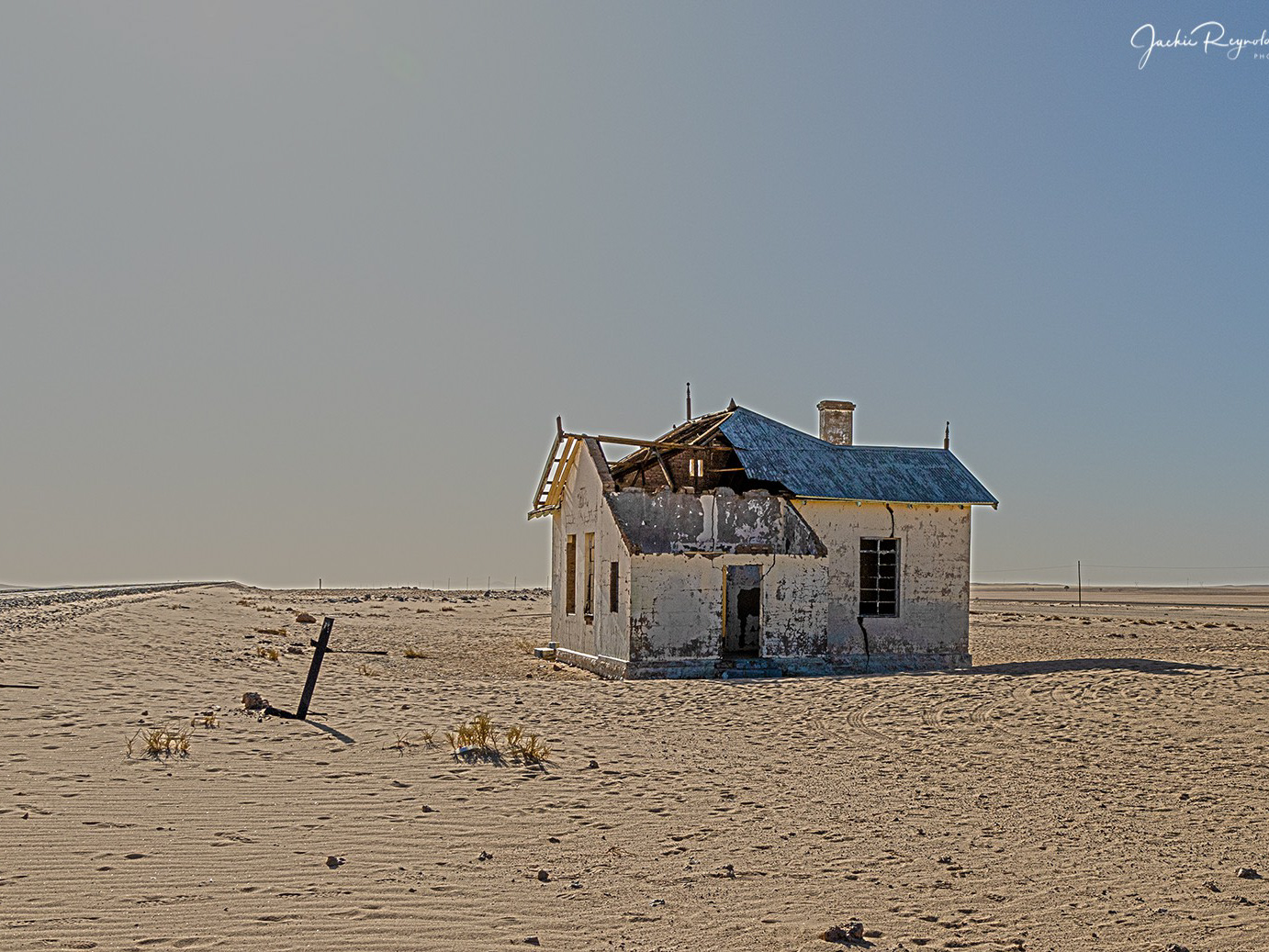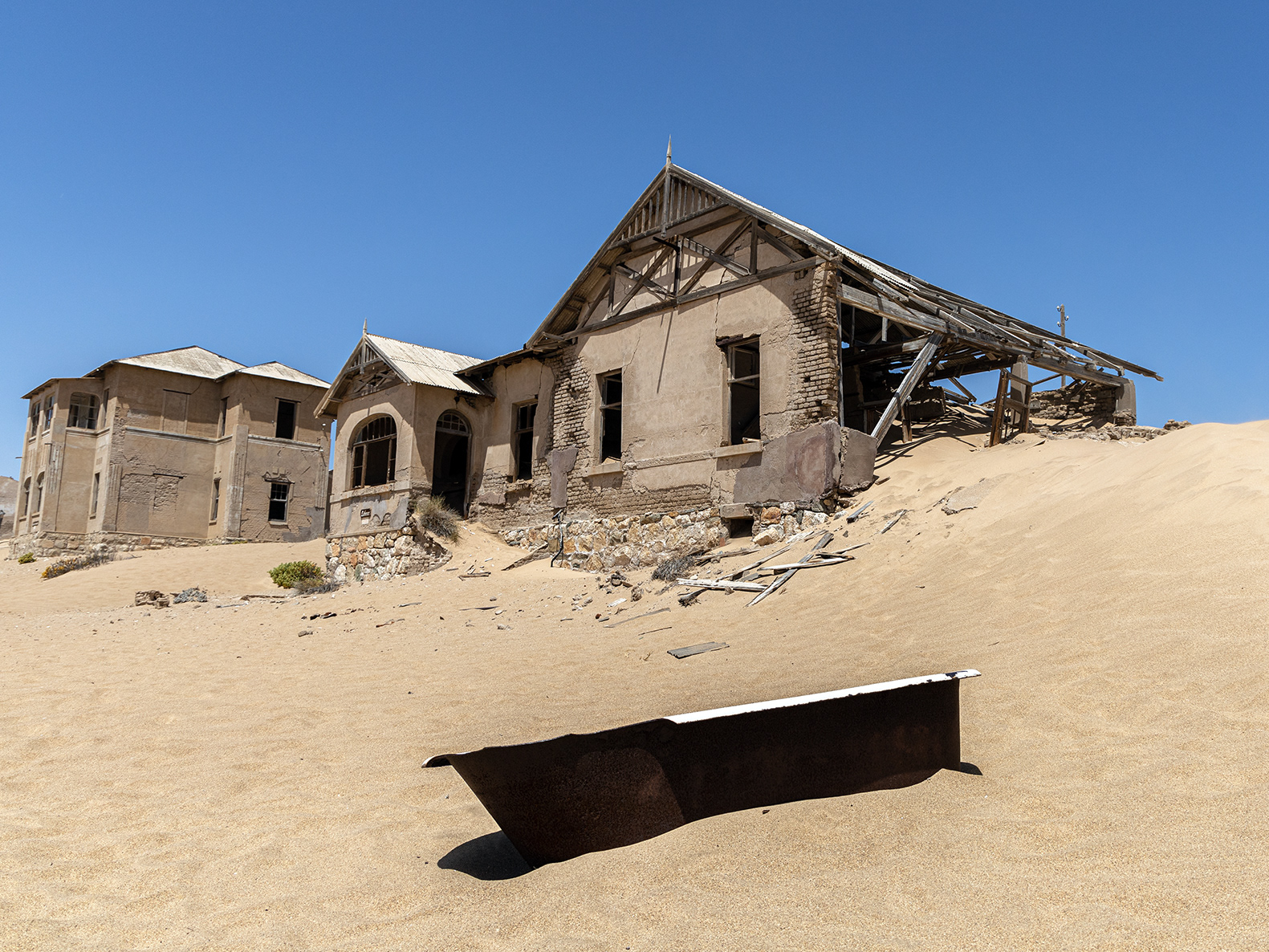The Huab River is an ephemeral river. Its source is southeast of Kamanjab, from where it flows westwards through Mopane savanna until it reaches the Skeleton Coast and the Atlantic Ocean. The scenery is remarkably varied and dramatic: camelthorn, mopane and ana trees line the sides of the riverbed, huge sandy valleys are dotted with gigantic boulder outcrops and rocky hills, red-rock mountains punctuate the horizon, and massive sand dunes studded with black volcanic rocks make the elephants walking below them seem tiny. The Huab is well known for its Desert elephant population. Desert elephants or desert-dwelling elephants are not a genetically distinct species of elephant, but are African bush elephants (Loxodonta africana) with unique characteristics. Desert-dwelling elephants can survive without drinking water for several days. They survive by eating moisture-laden vegetation that grows in riverbeds.
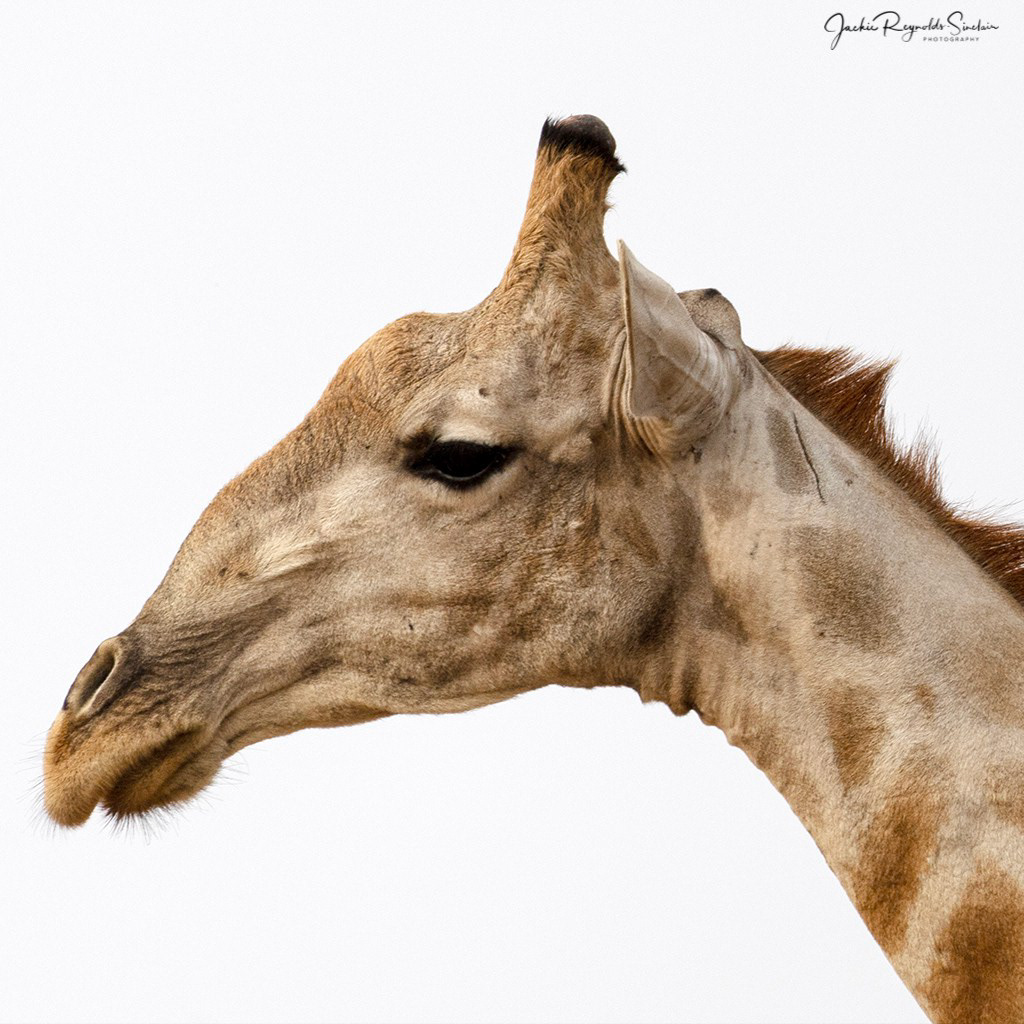
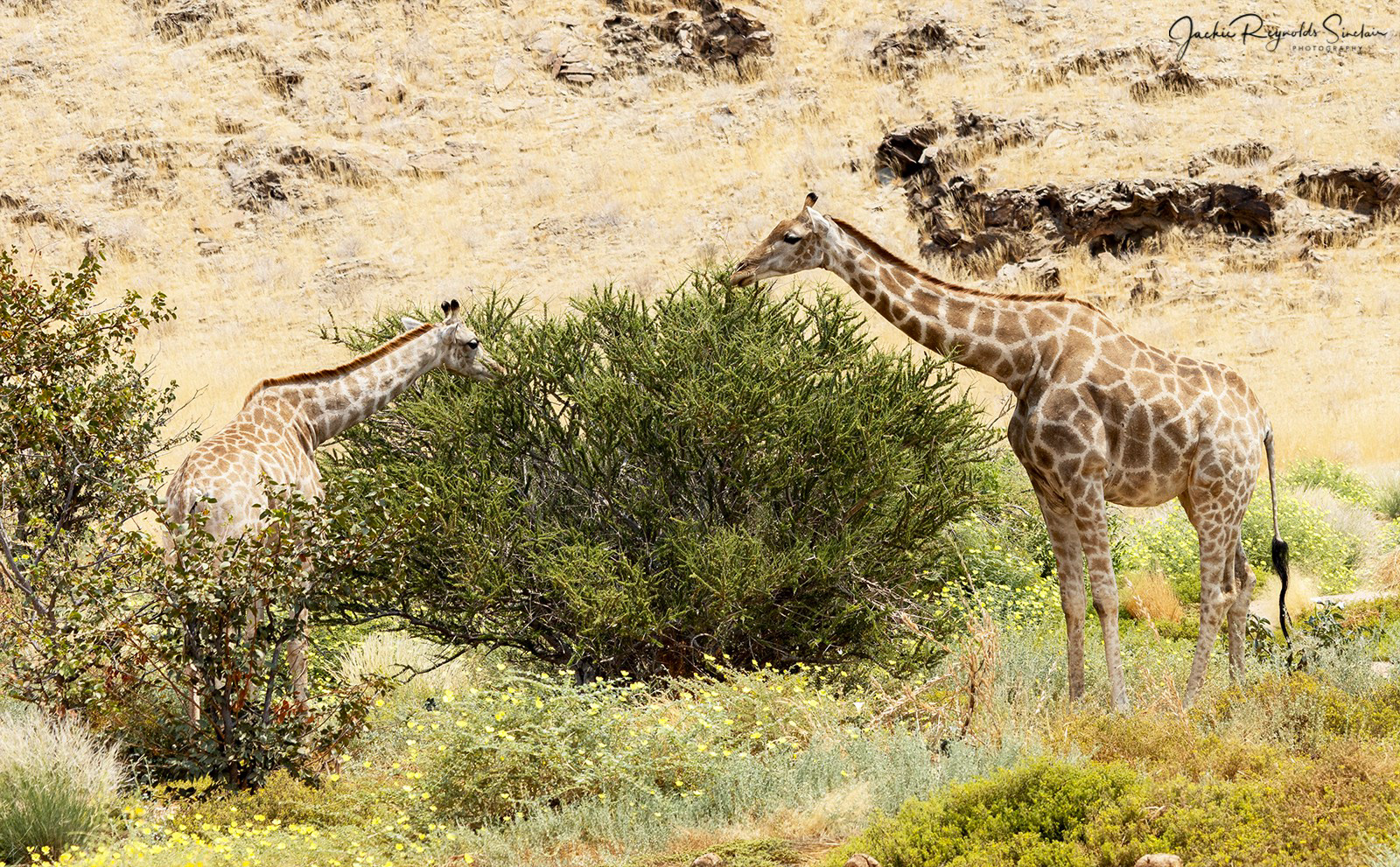
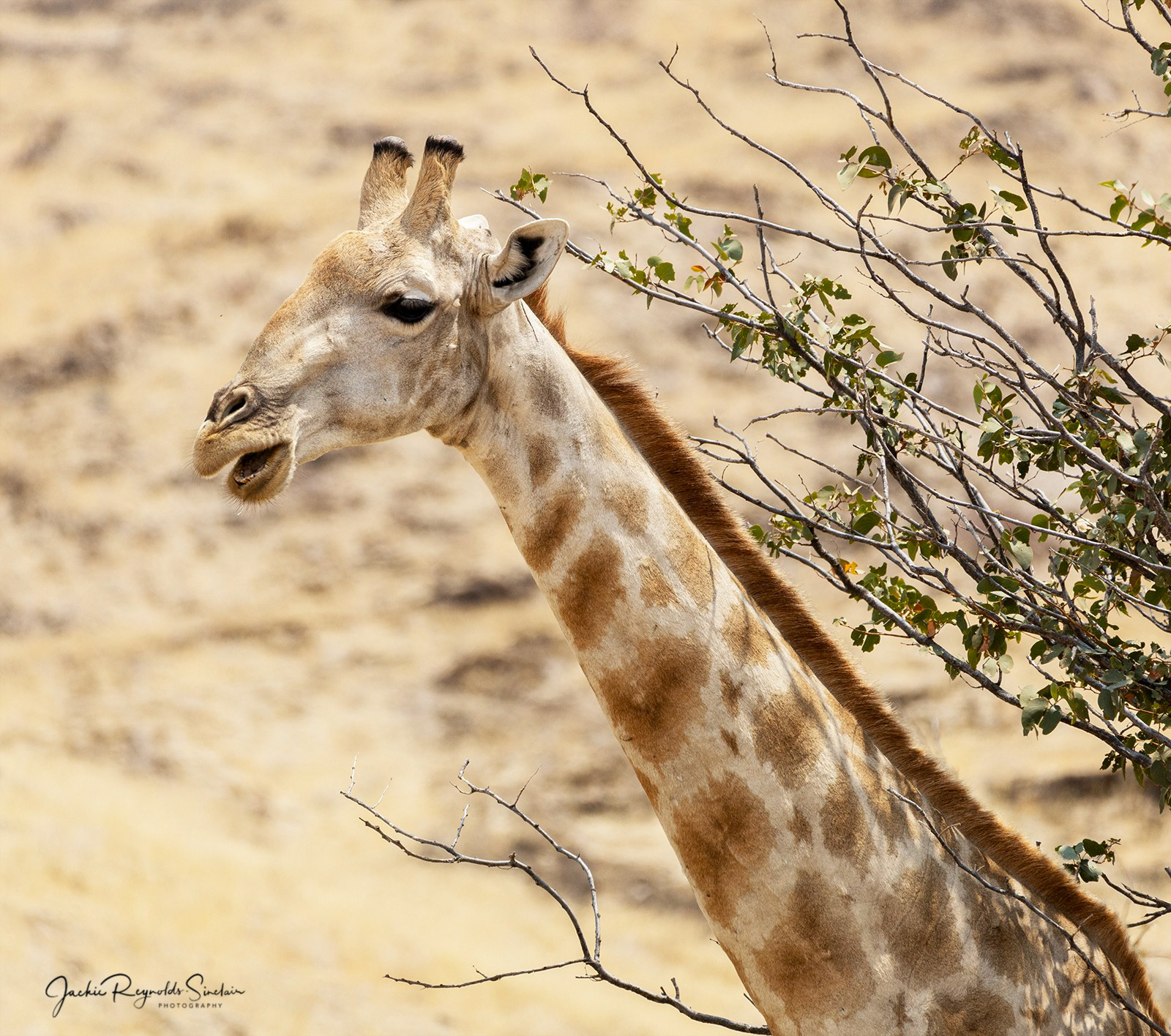
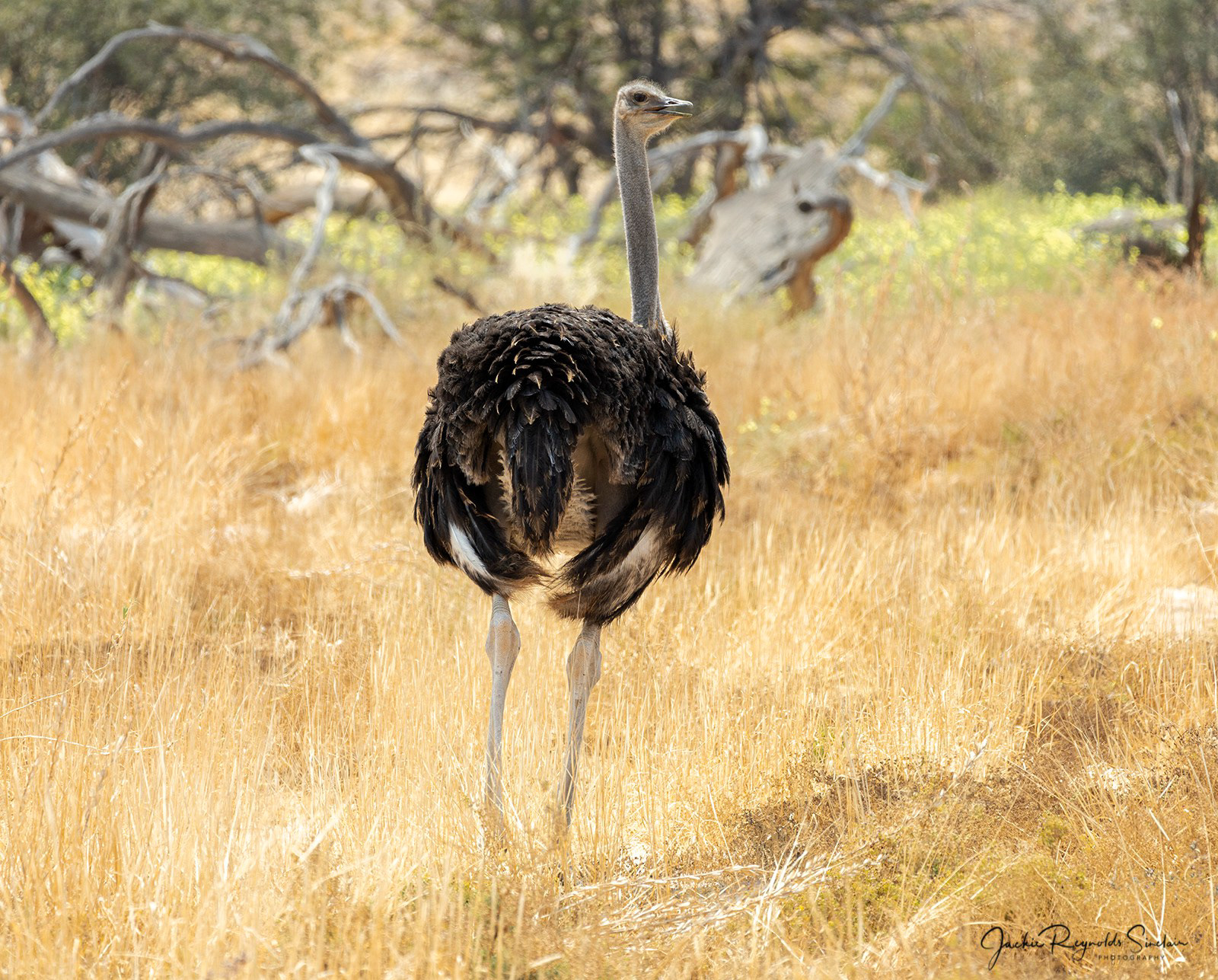
Twyfelfontein or /Ui-//aes has one of the largest concentrations of petroglyphs in Africa. 'Twyfel' means 'questionable' or 'uncertain' and 'fontein' is 'fountain'. The site is named after a nickname the locals gave to a topographer that came to the area to study the feasibility of farming in the region in 1947. His nickname meant David 'Doubts-the-Spring'. The world heritage site is small (less than 1 km square), but includes some remarkable galleries of rock engravings (petroglyphs) depicting an extraordinary diversity of wild animals – rhino, elephant, giraffe, oryx, ostrich, zebra and many more - and footprints. Predators like lion are scarce, although one particular lion is exceptional. There are also noteworthy pictures of seals and flamingoes - which indicate that the artists knew these animals from far-away places. The site forms a coherent, extensive and high-quality record of ritual practices relating to hunter-gatherer communities in this part of southern Africa over at least 2,000 years, and eloquently illustrates the links between the ritual and economic practices of hunter-gatherers.
